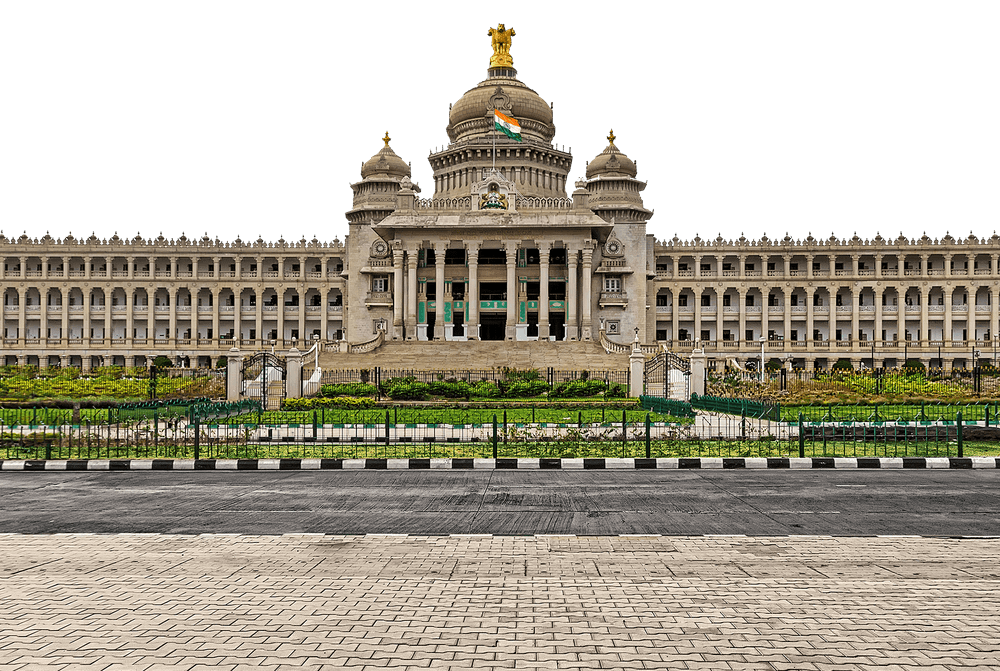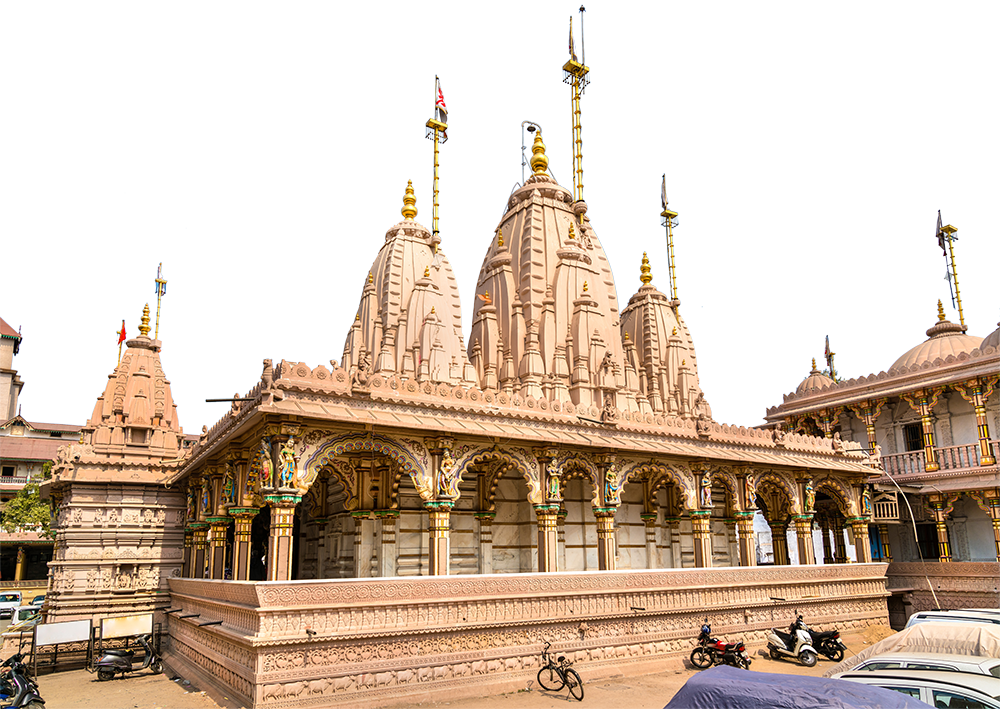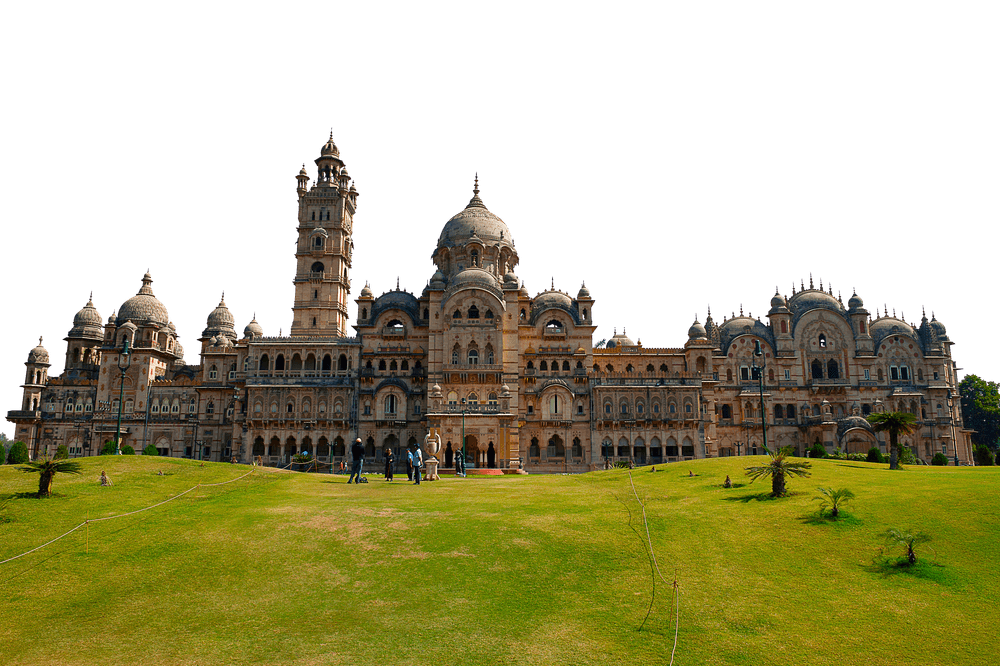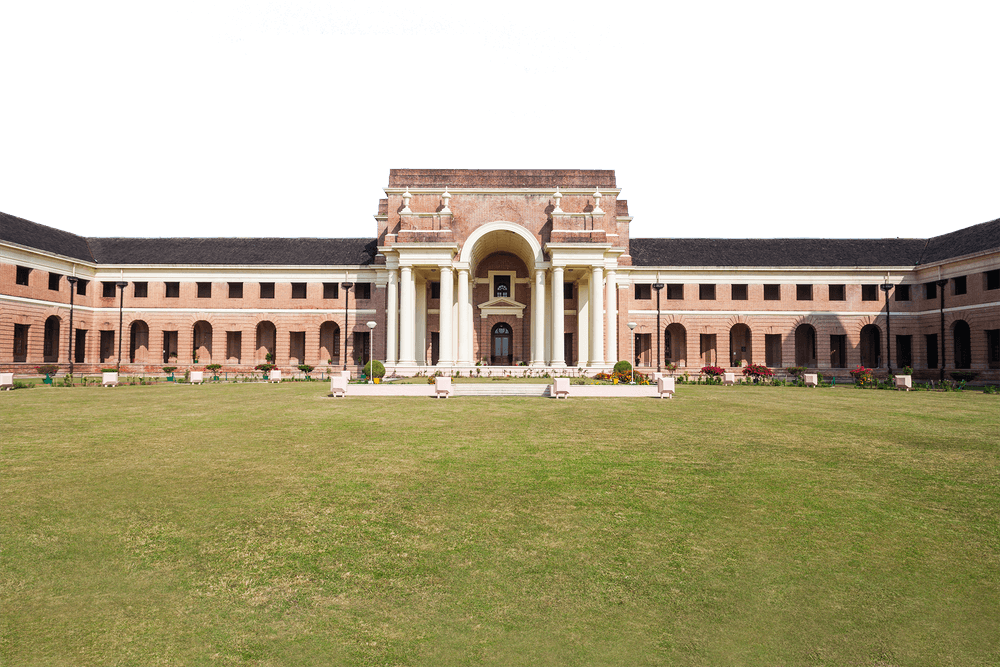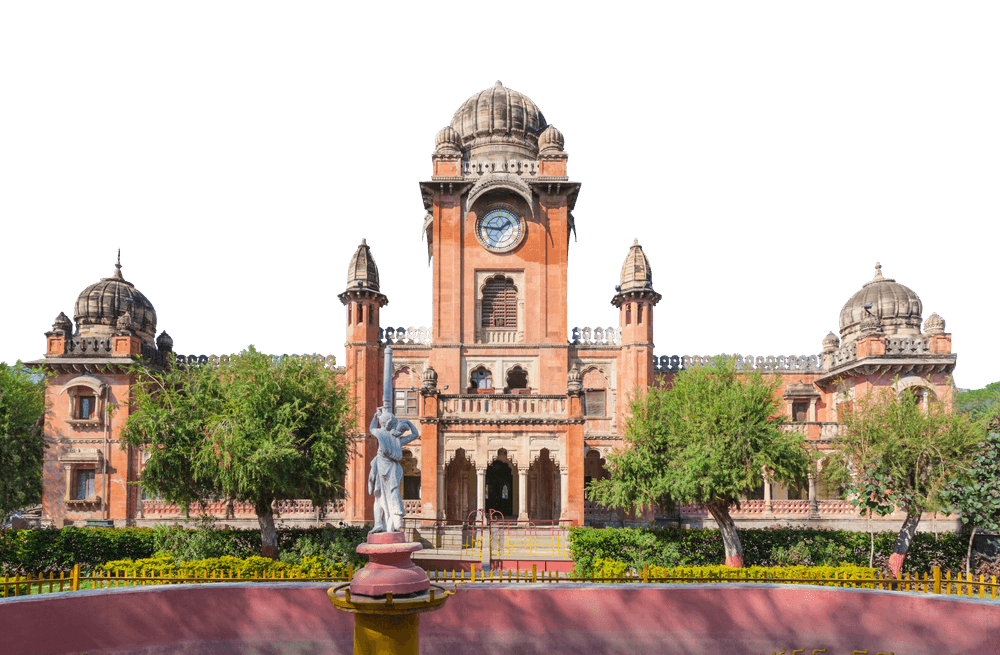
Basic Marathi Words for Living in Maharashtra You Must Know

If you’re new to Maharashtra, learning a few basic Marathi words can go a long way. A simple “Namaskar” or “Kasa Aahes?” can instantly make people smile and help you feel more at home. Marathi isn’t just a language; it’s a reflection of the state’s warmth, respect, and everyday life.
Whether you’re in Pune, Mumbai, or Nagpur, knowing these common phrases will make daily conversations smoother and more meaningful. Let’s get started with some basic Marathi words for beginners that you can easily use in your day-to-day life.
Learn Marathi for Daily Conversations – Essential Words & Sentences
Here are some everyday words and phrases that can help you in daily life:
| English | Marathi | Usage / Notes |
| Hello / Greetings | Namaskar (नमस्कार) | You can use this in formal or informal settings |
| How are you? | Kasa Aahes? (male) / Kashi Aahes? (female) | Gender matters in Marathi address |
| I am fine | Mi Changla Aahe (male) / Mi Changli Aahe (female) | Or Mi Theek Aahe works too |
| Yes | Ho (हो) | A simple affirmative |
| No | Nahi / Nakko (नाही / नाही / नको) | “Nakko” is used for negative commands or requests |
| Thank you | Dhanyawad (धन्यवाद) | A polite expression of gratitude |
| Sorry / Excuse me | Maaf Kara (माफ करा) | Works as both an apology and an excuse me |
| My name is … | Majh Nav ___ Aahe (माझं नाव ___ आहे) | Use this to introduce yourself |
| What is your name? | Tumcha Nav Kay Aahe? (तुमचं नाव काय आहे?) | Works as both an apology and an excuse. |
Cultural Etiquette in Marathi Conversations
Language is more than words; it’s about context, respect, and tone. Here are some etiquette tips to keep in mind:
- Use respectful forms: Marathi has formal and informal “you” or “Tumhi” (formal) vs “Tu” (informal). With elders or new acquaintances, it’s safer to use tumhi.
- Politeness matters: Phrases like “Krupaya” (please) or “Maaf Kara” (excuse me / sorry) go a long way.
- Greetings with folded hands: Saying “Namaskar” with folded hands (in the Indian style) is often appreciated.
- Mirror tone and pace: When speaking with native Marathi speakers, try to match their speaking pace and tone. Speaking too fast or arrogantly can come off as rude.
- Use local expressions: Once you’re comfortable, sprinkling in casual interjections like “Chaan aahe” (That’s great) or “Barobar” (Exactly) can make your speech feel more natural.
- Apologise/ask again politely: If you don’t get something, it’s okay to say “Punha Sanga” (Please say again) or “Mala Samajata Nahi” (I don’t understand).
These small gestures show humility and willingness, and people often reciprocate warmly.
Marathi Phrases for Travellers – Essential Expressions for Your Stay
When you’re travelling, these phrases will come in handy in everyday interactions.
- Kuthe aahe …? – Where is …?
- Kiti aahe? – How much is it?
- Pudhe Chala – Go forward
- Dahine Vala – Turn right
- Ujave Vala – Turn left
- Thamba – Stop
- Pani Havhe Aahe – I need water
- Shauchalay Kuthe Aahe? – Where is the restroom?
- Mala Madat Havhe Aahe – I need help
- Mala Samajla Nahi – I did not understand
These phrases let you get around, ask for directions, and manage basic needs.
Common Marathi Phrases for Shopping
Shopping in local markets gets much easier when you know how to speak the local language. Try these:
- Haav Kam Kar – Reduce the price / lower the cost
- Doan Ticket Dya – Give me two tickets (or “ticket dya” for “give ticket”)
- Kitī Dya? – How much will you give?
- Ek Dya – Please give one
- Kharaidi Karu – I’ll buy / I want to purchase
- Paise Dya – Give money
- Thodi Kami Karu Ka? – Can you reduce it a bit?
- Baghū Shakata Ka? – Can I see it?
Using Marathi in conversations while shopping often draws a friendlier response, and sometimes sellers may even give you a better deal because they see that you are trying.
Health and Emergency Phrases in Marathi
These are critical when things go wrong or you need assistance:
- Madat Kara! – Help!
- Doktor Aahes Ka? – Is there a doctor?
- Mala Dard Ahe – I am in pain
- Mala Angat Ahe – I feel nauseous
- Mala Bhook Lagli Aahe – I am hungry
- Mala Pani Havhe Aahe – I need water
- Aag Lagli Aahe – There’s fire
- Police Bula – Call the police
- Aai Va Vaidhya Bula – Call mother/doctor
Having these in your pocket (and maybe saving the Marathi spelling in your phone) can really help in urgent situations.
Marathi Greetings and Responses – Everyday Expressions
Greeting people and responding politely is the foundation of conversation:
- Namaskar – Hello / Greetings
- Kasa Aahes? / Kashi Aahes? – How are you?
- Mi Changla/Changli Aahe – I am good
- Dhanyawad – Thank you
- Punha Bhetuya – See you again
- Shubha Divas – Good day
- Shubha Ratri – Good night
People love it when someone tries to greet them in their own language — it sets a friendly tone right away.
Useful Marathi Words for Travel and Directions
Knowing directional terms and travel‑related words makes movement easier:
- Pudhe – Forward
- Maga – Back / Behind
- Aapla / Apan – We / Our
- Saral – Straight
- Agdi / Thodi – Exactly / A little
- Darwaja – Door
- Marg / Panth – Path / Road
- Stahan (Sthanak) – Station / Stop
- Bus / Bus Stand – Bus / Bus Stand
- Vahan – Vehicle
- Rail / Train – रेल / Train
- Jethe – Where
This helps when navigating roads, trains, bus stations, or simply finding your way around a city.
Numbers in Marathi – Learn Counting Easily
Numbers are essential — for prices, time, bus routes, etc. Here’s a quick guide:
| Number | Marathi | Pronunciation Hint |
| 1 | Ek (एक) | “Ay-k” |
| 2 | Don (दोन) | “Dohn” |
| 3 | Teen (तीन) | “Teen” |
| 4 | Char (चार) | “Chaar” |
| 5 | Pach (पाच) | “Paach” |
| 6 | Saha (सहा) | “Sa‑ha” |
| 7 | Saat (सात) | “Saat” |
| 8 | Aath (आठ) | “Aath” |
| 9 | Nau (नऊ) | “Now” |
| 10 | Daha / Dahaa (दहा) | “Da-haa” |
Once you know up to 10, you can combine them for higher numbers (e.g. doh-pach for 25, etc.). Preply’s guide also shows numbers with usage in time and counting.
Marathi Numbers, Dates, and Time Expressions
Beyond basic counting, here are some time and date expressions:
- Kiti Vajle? – What time is it?
- Saat Vajle – It’s seven o’clock
- Vajtil / Vajle – Will be / Has passed
- Aaj – Today
- Kal – Tomorrow (or Yesterday, depending on context)
- Parat – Again / Re‑
- Divas – Day
- Raatri / Ratri – Night
- Mahina – Month
- Varsha – Year
When you get comfortable, you can say things like:
“Aaj saat vajle aahet” — It is 7 o’clock today.
Marathi Food & Drink Vocabulary – Words for Eating Out
Dining out is one of the best ways to practice new vocabulary. Some helpful words and phrases:
- Jevan / Khau – Food / Eat
- Pani – Water
- Chaha – Tea
- Kofi / Coffee – Coffee
- Doodh – Milk
- Bhaji – Vegetable dish
- Bhat – Rice
- Roti / Bhakri – Flatbread
- Shak / Shaak – Vegetable curry
- Goad – Sweet
- Tikhhat / Tikhat – Spicy
- Mala Bhook Lagli Aahe – I am hungry
- Jeval Tayyar Aahe Ka? – Is the food ready?
- Kitī Zali? – How much did it cost?
- Thoda Kami Karu Ka? – Can you reduce a bit?
Ordering in Marathi often gains positive reactions — people appreciate the effort.
Marathi Pronunciation Tips and Practice Exercises
Pronunciation is often what makes you sound more natural (or not). Here are tips + exercises:
Tips
- Listen & mimic natives — Use podcasts, songs, or YouTube and repeat what you hear exactly.
- Note retroflex vs dental — Marathi has sounds (ṭ, ḍ, ṇ) that don’t exist in English. Tongue placement matters.
- Pay attention to nasalisation (anusvara / anunasika) — The “ँ” or “ं” marks affect how you pronounce vowels.
- Record yourself — Play back and compare with native speakers.
- Practice minimal pairs — Words that differ by one sound, and train your ear (e.g. kha vs ka).
- Don’t rush — Speaking slower with correct sounds is better than fast but unclear.
Exercises
- Shadowing: Play a short Marathi audio clip. Try copying exactly as you hear it, word for word, with the same timing and tone.
- Minimal Pair Drills: Pick pairs of similar-sounding words (e.g. kasa vs kashi, mi vs me) and repeat them alternately.
- Fill-in-the‑blank dialogues: Create mini dialogues and leave blanks for new words you’re learning, then fill them in later.
- Daily use: Choose 2–3 new words each day, and consciously use them in speech or notes (even mentally).
Resources and Daily Practice Tips to Learn Marathi
To go from basic to confident conversations, here are useful habits and resources:
- Language Tutors / Classes: Platforms like Preply offer structured lessons and feedback.
- Use flashcards (physical or apps like Anki) to repeatedly test vocabulary.
- Label your surroundings: Stick notes around your room with Marathi names (e.g., Darwaja for door, Mej / Table).
- Watch Marathi media: Films, TV shows, YouTube — even if you don’t understand everything, listening helps internalise sounds.
- Language exchange / speak with natives: Try casual conversations with Marathi speakers. Mistakes are part of the process.
- Keep a mini-diary: Write 2–3 sentences daily in Marathi (with help), even simple ones like “Aaj changla divas hota.”
- Use spaced repetition: Review old words while introducing new ones, so you don’t forget.
- Audio listening before bed: Even passive listening can help your brain pick up patterns.
- Join communities/forums: Ask native speakers for corrections, tips, or mini challenges.
The key is consistency — even 10–20 minutes every day can make a big difference over weeks.
Integrate Marathi into Your Daily Life
Learning Marathi doesn’t require perfection. It just takes a little effort, consistency, and curiosity. With these basic words and phrases, you can start having real conversations and navigate daily life in Maharashtra more easily. Whether you’re ordering food, greeting a neighbour, or asking for help, using Marathi helps build connection and respect. Don’t worry about making mistakes. Locals appreciate your willingness to learn. Start small, speak often, and let Marathi gradually become a natural part of your day. The more you use it, the more confident and welcomed you’ll feel.
FAQs
Q. Can I learn Marathi even if I don’t know any Indian language?
Yes, you can! Marathi has a logical structure, and starting with basic phrases makes it easy for beginners.
Q. How long does it take to learn basic Marathi?
With daily practice, you can start using simple phrases in just 2 to 3 weeks.
Q. Do I need to learn the Marathi script to speak it?
Not at first. You can start speaking using English transliterations and learn the script gradually if needed.
Q. Is Marathi very different from Hindi?
It shares similarities in grammar and some vocabulary, but pronunciation and usage are different.
Q. What’s the best way to practice Marathi daily?
Use common phrases in real conversations, label items at home, and listen to Marathi shows or YouTube channels.
Top Hospitals in Hyderabad: Your Complete Guide to Quality Healthcare
Read more
Work At The Top MNCs in Chennai
Read more
Top-Rated Hospitals in Bangalore for Trusted Medical Care
Read more
Prioritise Health With The Top 10 Hospitals in Jaipur
Read more
Hit the Track: Top Go-Karting Spots in Mumbai You Must Try!
Read more
Best Career Options After 12th: Your Ultimate Guide to Courses and Careers
Read more
- PGs in Bengaluru
- PGs in BTM Layout
- PGs in Banashankri
- PGs in Bellandur
- PGs in Domlur
- PGs in Electronic City Phase 1
- PGs in Electronic City Phase 2
- PGs in HSR Layout
- PGs in Hesaraghatta Road
- PGs in Kadubeesanahalli
- PGs in Kanakpura Road
- PGs in Kengeri
- PGs in Koramangala
- PGs in Kristu Jayanti
- PGs in Kumaraswamy Layout
- PGs in Kundalahalli Gate
- PGs in Magadi Road
- PGs in Mahadevapura
- PGs in Manyata Tech Park
- PGs in Marathahalli
- PGs in Mathikere
- PGs in RVCE
- PGs in Rajankunte
- PGs in Rajarajeshwari Nagar
- PGs in Reva University
- PGs in Sarjapur Road
- PGs in Soladevanahalli
- PGs in Whitefield
- Flats in Bengaluru
- Flats in BTM Layout
- Flats in Bellandur
- Flats in Bhartiya City
- Flats in Electronic City Phase 1
- Flats in Electronic City Phase 2
- Flats in HSR Layout
- Flats in Indiranagar
- Flats in JP Nagar
- Flats in Koramangala
- Flats in Kumaraswamy Layout
- Flats in Manyata Tech Park
- Flats in Marathahalli
- Flats in Sarjapur Road
- Flats in Whitefield
- Sonoma House, Koramangala
- Norwich House, Marathahalli
- Shanghai House, Bellandur
- Lincoln House, Electronic City Phase 1
- Vernon House, Reva University
- Durham House, Whitefield
- Turin House, Electronic City Phase 1
- Seattle House, Bellandur
- Ibarra House, Reva University
- Lisbon House, Electronic City Phase 1
- Sofia House, Sarjapur Road
- Rimini House, Bellandur
- Heidelberg House, Kundalahalli Gate
- Incheon House, Reva University
- Frankfurt House, Koramangala
- Newport House, Reva University
- Sao Paulo House, Whitefield
- Brussels House, Bellandur
- Springbok House, Kundalahalli Gate
- Amsterdam House, Electronic City Phase 1
- Bochum House, Bellandur
- St Petersburg House, Manyata Tech Park
- Medan House, Whitefield
- Salta House, Reva University
- Nairobi House, Manyata Tech Park
- Salento House, Reva University
- Hamburg House, Koramangala
- Ronda House, Reva University
- Manchester House, Manyata Tech Park
- Salzburg House, Koramangala
- Cologne House, Mathikere
- Bratislava House, Koramangala
- Como House, Koramangala
- Shrewsbury House, Koramangala
- Vaduz House, Koramangala
- Dortmund House, Mathikere
- Fargo House, Mathikere
- Aswan House, Mathikere
- Rostock House, Mathikere
- Granada House, RVCE
- Cordoba House, RVCE
- Spielberg House, Koramangala
- Laredo House, Mathikere
- Vilnius House, Mathikere
- Kiev House, Kumaraswamy Layout
- Bilbao House, HSR Layout
- Scottsdale House, Marathahalli
- Modesto House, HSR Layout
- Teresina House, Koramangala
- Podolsk House, Koramangala
- Narbonne House, Koramangala
- Villareal House, Koramangala
- Jerez House, Koramangala
- Chatham House, Marathahalli
- Leeds House, Koramangala
- Lafayette House, Koramangala
- Lusaka House, Koramangala
- Albury House, Rajankunte
- Anamur House, Kumaraswamy Layout
- Lobito House, Mathikere
- Wichita House, Magadi Road
- Crotone House, Rajarajeshwari Nagar
- Cuneo House, Rajarajeshwari Nagar
- Casper House, Domlur
- Tamale House, Hesaraghatta Road
- Cayenne House, Mahadevapura
- Saratov House, Rajarajeshwari Nagar
- Batumi House, Rajarajeshwari Nagar
- Wakefield House, Kadubeesanahalli
- Padova House, Magadi Road
- Evora House, Hesaraghatta Road
- Jounieh House, BTM Layout
- Nome House, Rajarajeshwari Nagar
- Volos House, Kengeri
- Cicero House, Electronic City Phase 2
- Tumaco House, Kumaraswamy Layout
- Calabar House, Kumaraswamy Layout
- Monza House, Whitefield
- Huelva House, RVCE
- Managua House, Soladevanahalli
- Tacoma House, Soladevanahalli
- Serov House, Rajankunte
- Langley House, Kadubeesanahalli
- Bakersfield House, Whitefield
- Viseu House, Mathikere
- Dublin House, Electronic City Phase 2
- Davao House, Soladevanahalli
- Debrecan House, Rajarajeshwari Nagar
- Solingen House, Kanakpura Road
- Maturin House, Magadi Road
- Rotherham House, Kumaraswamy Layout
- Krefeld House, Magadi Road
- Luhansk House, Kengeri
- Modena House, Manyata Tech Park
- Bismarck House, Soladevanahalli
- Glencoe House, Rajankunte
- Salisbury House, Kristu Jayanti
- Cork House, HSR Layout
- Watford House, Rajankunte
- Nottingham House, Mahadevapura
- Varda House, Hesaraghatta Road
- Kampala House, Banashankri
- PGs in Mumbai
- PGs in Andheri East
- PGs in Bandra
- PGs in Juhu
- PGs in Kharghar
- PGs in Vile Parle
- Flats in Mumbai
- Flats in Andheri East
- Flats in Vile Parle
- New Orleans House, Vile Parle
- Benin House, Bandra
- Norman House, Andheri East
- Monterrey House, Juhu
- Cincinnati House, Kharghar
- PGs in Gurgaon
- PGs in Golf Course Extension
- PGs in HUDA City Center
- PGs in Medanta
- PGs in Sohna Road
- Flats in Gurgaon
- Flats in DLF Phase 4
- Flats in Golf Course Extension
- Flats in Golf Course Road
- Flats in HUDA City Center
- Flats in Medanta
- Flats in Sohna Road
- Dunkirk House, Sohna Road
- Tortosa House, Golf Course Extension
- Pisa House, HUDA City Center
- Taiping House, Medanta
- Crawley House, Medanta
- PGs in Pune
- PGs in Akurdi
- PGs in Balewadi
- PGs in Baner
- PGs in Dhankawadi
- PGs in Hinjawadi
- PGs in Karve Nagar
- PGs in Kharadi
- PGs in Kondhwa
- PGs in Kothrud
- PGs in Lohegaon Dhanori
- PGs in Loni Kalbhor
- PGs in Narhe
- PGs in Senapati Bapat Road
- PGs in Shivaji Nagar
- PGs in Vadgaon
- PGs in Viman Nagar
- PGs in Wagholi
- PGs in Wakad
- Flats in Pune
- Flats in Balewadi
- Flats in Baner
- Flats in Hadapsar
- Flats in Hinjawadi
- Flats in Kharadi
- Flats in Koregaon Park
- Flats in Pimple Saudagar
- Flats in Senapati Bapat Road
- Flats in Wakad
- Whitehaven House, Wagholi
- Austin House, Kondhwa
- Malmo House, Viman Nagar
- Pelotas House, Vadgaon
- Haifa House, Baner
- Sarnen House, Dhankawadi
- Tripoli House, Loni Kalbhor
- Florence House, Hinjawadi
- Karlsruhe House, Wakad
- Kingston House, Wagholi
- Tel Aviv House, Baner
- Shiraz House, Dhankawadi
- Parma House, Hinjawadi
- Barnsley House, Lohegaon Dhanori
- Giza House, Dhankawadi
- Positano House, Hinjawadi
- Ripon House, Wagholi
- Girona House, Dhankawadi
- Reno House, Hinjawadi
- Manisa House, Wagholi
- Napier House, Akurdi
- Cairo House, Dhankawadi
- Alexandria House, Dhankawadi
- Pinsk House, Vadgaon
- Sidon House, Vadgaon
- Oran House, Karve Nagar
- Dover House, Wakad
- Livermore House, Viman Nagar
- Tartus House, Vadgaon
- Evansville House, Viman Nagar
- Herat House, Lohegaon Dhanori
- Upington House, Karve Nagar
- Mckinney House, Karve Nagar
- Boulder House, Shivaji Nagar
- Andria House, Senapati Bapat Road
- Waco House, Balewadi
- Presov House, Viman Nagar
- Marseille House, Hinjawadi
- Syzran House, Kondhwa
- Cosenza House, Shivaji Nagar
- Sarasota House, Shivaji Nagar
- Mogilev House, Narhe
- Mansa House, Karve Nagar
- Kenitra House, Dhankawadi
- Alanya House, Kharadi
- Schengen House, Wakad
- Semey House, Wakad
- Tallinn House, Hinjawadi
- Bissau House, Loni Kalbhor
- Juliaca House, Kondhwa
- Tobruk House, Karve Nagar
- Amiens House, Kharadi
- Pereira House, Wakad
- Reynosa House, Hinjawadi
- Telford House, Loni Kalbhor
- Torreon House, Wagholi
- Nelson House, Akurdi
- Akron House, Kothrud
- PGs in Ahmedabad
- PGs in Bopal & Shilaj
- PGs in Gota
- PGs in Navrangpura
- PGs in Vastrapur & Thaltej
- Wilmington House, Navrangpura
- Portland House, Gota
- Annapolis House, Navrangpura
- Odessa House, Gota
- Evanston House, Vastrapur & Thaltej
- Elgin House, Bopal & Shilaj
- Callao House, Navrangpura
- PGs in Hyderabad
- PGs in Ameerpet
- PGs in Aziznagar
- PGs in Gachibowli
- PGs in Gandi Maisamma
- PGs in Himayatnagar
- PGs in Kondapur
- PGs in Kukatpally
- PGs in Madhapur
- PGs in Narsingi
- PGs in Q City
- Flats in Hyderabad
- Flats in Gachibowli
- Flats in Hitec City
- Flats in Kondapur
- Flats in Q City
- Bagan House, Kukatpally
- Maribor House, Kondapur
- Burnley House, Kondapur
- Amarillo House, Q City
- Vernier House, Narsingi
- Lagos House, Gandi Maisamma
- Syracuse House, Gandi Maisamma
- Mendoza House, Gachibowli
- Canberra House, Kukatpally
- Brasov House, Aziznagar
- Munich House, Gachibowli
- Tuzla House, Gandi Maisamma
- Belgrade House, Ameerpet
- Queenstown House, Aziznagar
- Cartagena House, Himayatnagar
- Rochdale House, Narsingi
- Bolton House, Narsingi
- Lublin House, Gandi Maisamma
- Dijon House, Narsingi
- Conroe House, Gachibowli
- Kassel House, Gachibowli
- Launceston House, Aziznagar
- Vigo House, Gachibowli
- Winnipeg House, Madhapur
- Bremen House, Gachibowli
- Zenica House, Gandi Maisamma
- Marianna House, Gachibowli
- Sunderland House, Gachibowli
- Memphis House, Q City
- Sandakan House, Aziznagar
- Rabat House, Gachibowli
- Limoges House, Gachibowli
- Meknes House, Gandi Maisamma
- Merlo House, Aziznagar
- Gateshead House, Gandi Maisamma
- Troyes House, Narsingi
- PGs in Delhi
- PGs in Laxmi Nagar
- PGs in North Campus
- PGs in South Campus
- Cardiff House, Laxmi Nagar
- Sendai House, South Campus
- Boston House, North Campus
- Quito House, Laxmi Nagar
- Nagoya House, South Campus
- Montreal House, North Campus
- Poznan House, Laxmi Nagar
- Perugia House, Laxmi Nagar
- Kiel House, North Campus
- Kobe House, South Campus
- Sheffield House, North Campus
- Penzance House, North Campus
- Hiroshima House, South Campus
- Toronto House, North Campus
- Romford House, North Campus
- Stockton House, North Campus
- San Diego House, North Campus
- Kawasaki House, South Campus
- Weymouth House, North Campus
- Okazaki House, South Campus
- Derby House, North Campus
- Ventura House, North Campus
- Armagh House, North Campus
- Nuremberg House, North Campus
- Bukhara House, North Campus
- Ancona House, Laxmi Nagar
- PGs in Chennai
- PGs in Anna Nagar
- PGs in Guindy
- PGs in Nungambakkam
- PGs in OMR
- PGs in Pallavaram
- PGs in Poonamallee
- PGs in Porur
- PGs in Urapakkam
- PGs in Vadapalani
- Flats in Chennai
- Flats in Anna Nagar
- Flats in Guindy
- Flats in OMR
- Flats in Porur
- Eugene House, Poonamallee
- Doncaster House, Pallavaram
- Odense House, Nungambakkam
- Agadir House, Porur
- Luton House, Porur
- Getafe House, OMR
- Clarksville House, Nungambakkam
- Flensburg House, Nungambakkam
- Conway House, OMR
- Osasco House, Nungambakkam
- Vitoria House, OMR
- Toledo House, Nungambakkam
- Tulsa House, Nungambakkam
- Greensboro House, OMR
- Santa Rosa House, OMR
- Mataro House, OMR
- Tyler House, OMR
- Sarnia House, Porur
- Harrogate House, Urapakkam
- Shumen House, Guindy
- Essen House, Porur
- Murcia House, Anna Nagar
- Erbil House, Urapakkam
- Irving House, Porur
- Mildura House, Vadapalani
- Naperville House, Pallavaram
- Springfield House, Pallavaram
- Latina House, Porur
- Zwickau House, Urapakkam
- Fernley House, Urapakkam
- Mazatlan House, Pallavaram
- Warrington House, Pallavaram
- Knoxville House, Pallavaram
- Grodno House, Guindy
- PGs in Coimbatore
- PGs in Avinashi Road
- PGs in Gandhipuram
- PGs in Saravanampatti
- Adana House, Avinashi Road
- Cali House, Avinashi Road
- Brunswick House, Avinashi Road
- Calgary House, Avinashi Road
- Rivas House, Gandhipuram
- Salto House, Avinashi Road
- Metz House, Saravanampatti
- Smolensk House, Avinashi Road
- Waterloo House, Avinashi Road
- Carmen House, Avinashi Road
- Savannah House, Avinashi Road
- Burbank House, Saravanampatti
- Quimper House, Saravanampatti
- PGs in Greater Noida
- PGs in Knowledge Park
- Rijeka House, Knowledge Park
- Chicago House, Knowledge Park
- Adelaide House, Knowledge Park
- Athens House, Knowledge Park
- Paris House, Knowledge Park
- PGs in Vadodara
- PGs in Ajwa Road
- PGs in Fatehgunj
- PGs in Sayaji Bagh
- PGs in Waghodia Road
- Christchurch House, Waghodia Road
- Drammen House, Fatehgunj
- Auckland House, Waghodia Road
- Oslo House, Sayaji Bagh
- Wellington House, Ajwa Road
- Hamilton House, Ajwa Road
- PGs in Dehradun
- PGs in Pondha
- Kotor House, Pondha
- Semarang House, Pondha
- Jinan House, Pondha
- Luzon House, Pondha
- Koh Samui House, Pondha
- Yangon House, Pondha
- Pattaya House, Pondha
- Manila House, Pondha
- Marsala House, Pondha
- Zaragoza House, Pondha
- Rennes House, Pondha
- PGs in Indore
- PGs in Bhanwar Kua
- PGs in Geeta Bhawan
- PGs in Rau
- PGs in Vijay Nagar
- Tunis House, Rau
- Riga House, Bhanwar Kua
- Lucerne House, Vijay Nagar
- Verona House, Rau
- Boden House, Bhanwar Kua
- Elista House, Bhanwar Kua
- Pasadena House, Vijay Nagar
- Segovia House, Vijay Nagar
- Kolding House, Geeta Bhawan
- Rotorua House, Rau
- Easton House, Vijay Nagar
- Beira House, Geeta Bhawan
- Prato House, Rau
- Pretoria House, Bhanwar Kua
- Santa Barbara House, Bhanwar Kua
- Cameron House, Vijay Nagar
- Durban House, Geeta Bhawan
- Nazareth House, Geeta Bhawan
- Trafford House, Vijay Nagar
- Nimbus House, Vijay Nagar
- Caen House, Vijay Nagar
- Valera House, Vijay Nagar
- Culiacan House, Bhanwar Kua
- Minya House, Vijay Nagar

